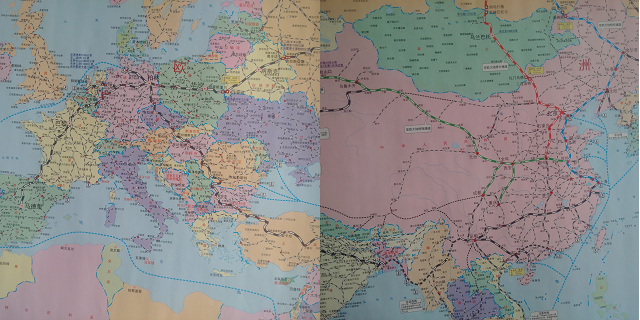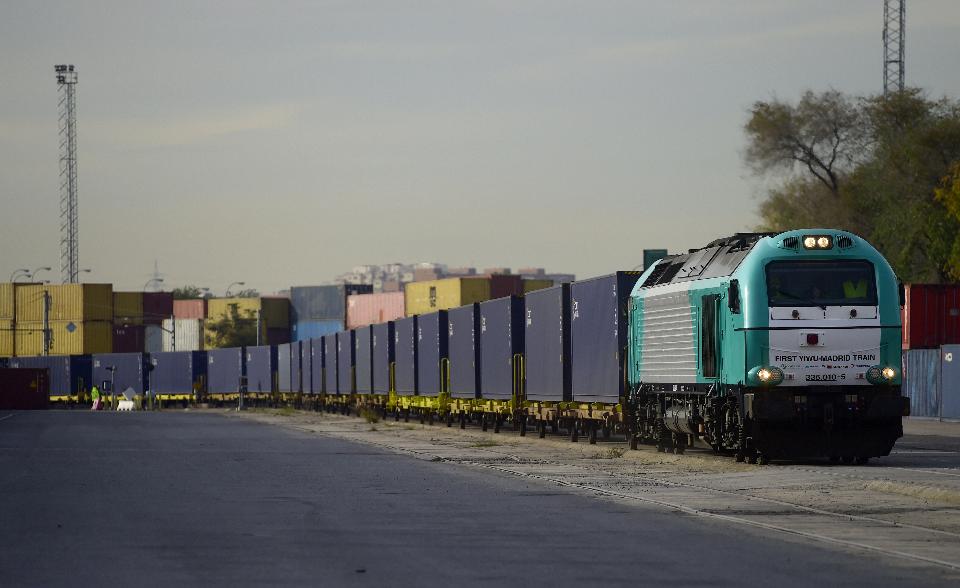“This was all started one hundred years ago by the Russians,” DHL’s Konrad Godlewski stated as he pointed to a long line that extended across a giant map of Eurasia which was prominently displayed at the front of an office in the Suzhou Railway Consolidated Freight Station, a bonded logistics zone in the east of China. “The Trans-Siberian,” he continued, “is what began this whole idea of shipping by rail between Europe and Asia.”
Now, a century later, this idea has been exponentially intensified as a new network of rail routes are being forged between east and west. As a key component of the Silk Road Economic Belt, the overland portion of China’s Belt and Road initiative, direct cargo trains are now connecting together an ever-increasing number of cities in China and Europe. With key improvements in route options, performance, and customs protocols, trans-continental rail transport is set for a renaissance.
The map on the wall was published by China Railways, and it was the master plan of the emerging rail routes that are now spanning across Eurasia. Suzhou is now directly connected by rail to Warsaw, Lianyugang to Rotterdam, Chengdu to Lodz, Chongqing to Duisburg, Yiwu to Madrid, Zhengzhou to Hamburg. In all, more than twelve Chinese and nine European cities are now hubs for these 12,000+ kilometer trans-continental direct trains. Currently, these trains travel along one of two main routes: either going due north from China and connecting with Russia’s Trans-Siberian or going west across Kazakhstan and feeding into the Trans-Siberian at Yekaterinburg, a place that is best known for being located on the dividing line between Europe and Asia. Although there was also a very ambitious, though pending, third rail route outlined on the China Railways map, which stretches south from Kunming, the capital of China’s western Yunnan province, through Myanmar, Bangladesh, India, Pakistan, Iran, and Turkey, before terminating in the heart of Europe at Hamburg, thus completing a great cycle of commerce that wraps up Eurasia like the stitched lacing around the contour of a baseball.

China Railways map of trains between China and Europe.
It now seems as if every sizable city in China is vying to have their own China-Europe direct train, as these rail lines have quickly become part of the criteria for evaluating how well-connected a city’s infrastructure really is, which is an important factor for luring business and investment. “When investors look for new places to invest in China now there is one more factor for them to consider,” Godlewski explained. “So it’s getting more attractive because there is another good option for transportation to Europe.” If the current trend continues, before long nearly every province in China will more than likely have at least one Europe-bound train.
A picture taken on December 9, 2014 shows the ‘Yi’xin’ou’ cargo train arriving at the
Abronigal railway station in Madrid. The 82-wagon cargo train, which left the city of
Yiwu in southern China on November 18, reached Spain today after traveling
13,000 kilometres (6,200 miles), passing through eight countries, including
Russia, Germany and France.
Forbes
Please
contact us in case of Copyright Infringement of the photo sourced from the internet, we will remove it within 24 hours.


